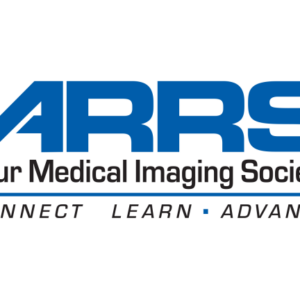Description
+ Include: 31 videos + 1 pdf, size: 11.7 GB
OVERVIEW
Pulmonary vascular disease (PVD), including pre- and post-capillary pulmonary hypertension, are a spectrum of progressive, symptomatic, and ultimately fatal disorders for which significant advances in treatment have been made. Despite advances in the management of PVD, the mortality rate remains disproportionate. Evaluation and treatment are often delayed until patients present with serious complications. Effective management requires timely recognition, accurate diagnosis, and selection of the different therapeutic options.
Progression to right ventricular dysfunction and finally failure can occur as an acute event in consequences where the pulmonary hypertension develops acutely as with pulmonary embolism, or because of a chronic condition such as pulmonary arterial hypertension, chronic thromboembolic pulmonary hypertension (CTEPH), chronic obstructive pulmonary disease (COPD), interstitial lung disease, or chronic left sided heart or valvular disease.
Early detection and appropriate management can improve quality of life and may improve survival. Medical therapy has come a long way towards decreasing symptoms, enhancing performance, and improving prognosis, but there is still a long way to go, especially for the broader population of patients with PVD.
TARGET AUDIENCE
This program is tailored to clinical and research professionals who study and/or care for patients with right heart disease, congenital heart disease, pulmonary hypertension, and associated disorders.
LEARNING OBJECTIVES
At the end of this program, participants should be able to:
- Review the options for advanced imaging approaches to assess and monitor RV function and pulmonary vascular remodeling
- Describe pharmacologic interventions to augment or restore RV function in the patient with advanced PVD or critical illness
- Assess the latest interventional, device, and pharmacologic approaches to PVD and evaluate these options in various forms of PVD, including disease-modifying pathways such as PDGF and TGF-beta signaling
- Discuss advanced hemodynamic and physiologic correlates of right ventricular-pulmonary arterial coupling
+ Topics:
Agenda.pdf
Assessing RV Function and Response to Treatment Advanced Imaging Approaches to Assessing Pulmonary Vascular Remodeling and RV Function.mp4
Assessing RV Function and Response to Treatment Assessing the RV- It’s All in the Curves.mp4
Assessing RV Function and Response to Treatment Assessing the RV- It’s the Dots, Not the Curves- Focus on Speckle Tracking and Strain Imaging.mp4
Assessing RV Function and Response to Treatment Is There a Role for PET or Molecular Imaging to Assess the RV.mp4
Assessing RV Function and Response to Treatment Panel Discussion.mp4
KEYNOTE PRESENTATION Assessing Right Ventricular Function Using Exercise, Imaging, and Hemodynamics.mp4
Novel Interventional and Pharmaceutical Approaches In the Age of Disease Modifiers, What Should our Approach to Treatment be.mp4
Novel Interventional and Pharmaceutical Approaches Intrapulmonary Artery Balloon Pump – Why and When.mp4
Novel Interventional and Pharmaceutical Approaches Panel discussion.mp4
Novel Interventional and Pharmaceutical Approaches Targeting BMPR2.mp4
Novel Interventional and Pharmaceutical Approaches Targeting Metabolism – is it a Viable Target.mp4
Pulmonary Embolism Clot In Transit – What is the Optimal Approach.mp4
Pulmonary Embolism Optimal Duration of Anticoagulation – 2 months; 3 months; life long.mp4
Pulmonary Embolism Panel discussion.mp4
Pulmonary Embolism Provoked and Unprovoked – What is the Difference, and does it Matter.mp4
Pulmonary Embolism What does Clot Burden Mean.mp4
Pulmonary Non-Hypertensive Vascular Pathology Anomalous Venous Return – Diagnosis and Management.mp4
Pulmonary Non-Hypertensive Vascular Pathology Left to Right Shunting and Enhanced Pulmonary Blood Flow – Why is the Patient Dyspneic.mp4
Pulmonary Non-Hypertensive Vascular Pathology Panel discussion.mp4
Pulmonary Non-Hypertensive Vascular Pathology Pulmonary Artery Aneurysm – is it a Surgical Disease.mp4
Pulmonary Non-Hypertensive Vascular Pathology Pulmonary AVM’s without HHT.mp4
The Art of Hemodynamics – What does the RHC Really Tell Us Clinical Implications of Aggressive Afterload Reduction.mp4
The Art of Hemodynamics – What does the RHC Really Tell Us Panel discussion.mp4
The Art of Hemodynamics – What does the RHC Really Tell Us Pulmonary Artery Hemodynamics- the Action is in the Proximal Vasculature.mp4
The Art of Hemodynamics – What does the RHC Really Tell Us Pulmonary Artery Hemodynamics- the Action is in the Small Vessels.mp4
The Art of Hemodynamics – What does the RHC Really Tell Us RV-PA Coupling, Afterload, and Pressure-Volume Curves.mp4
The Failing Right Heart – What Are the Realistic Salvage Options Inotropic Support in RV Failure – Is There Really a Role.mp4
The Failing Right Heart – What Are the Realistic Salvage Options Panel discussion.mp4
The Failing Right Heart – What Are the Realistic Salvage Options Vasopressor Support in RH Failure – Can We Optimize RV Mechanics and Coronary Perfusion.mp4
The Failing Right Heart – What Are the Realistic Salvage Options When and why is the RV too Sick for Lung Transplantation.mp4
The Failing Right Heart – What Are the Realistic Salvage Options When to Consider MCS – Hemodynamic, Physiologic, and Patient Selection.mp4






